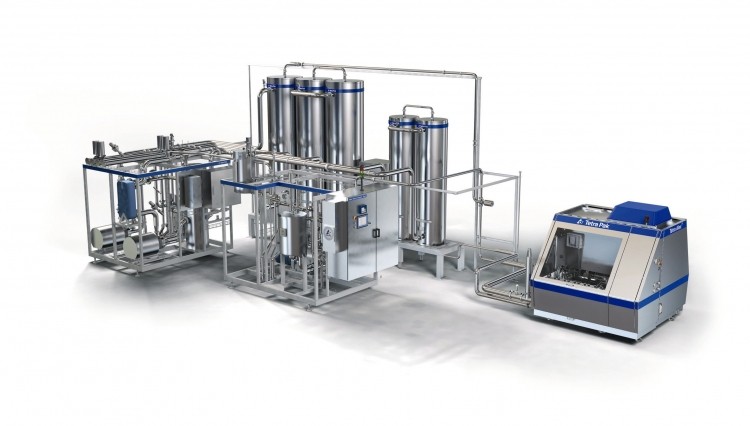Tetra Pak launches aseptic unit for viscous, particulate foods

The Tetra Therm Aseptic Visco high pressure unit enables efficient high-capacity UHT treatment for high viscous soups and sauces, tomato pastes, custard desserts, fruit preparations, vegetable purees and baby food products, said the company today.
Less waste
The key to the improved performance of the system compared to conventional units lies in the development of an innovative heat exchanger – call Tetra Vertico.
The high-pressure-rated coil tubular heat exchanger handles pressures up to 350 bar and enables higher in-pipe velocity and lower system volumes. This means it takes fewer litres to fill up the system, which translates into smaller mix zones (product/water), shorter change over times and faster start-up, said a Tetra Pak statement.
These lower system volumes also reduce product losses by up to 50 per cent compared to conventional equipment used for processing high-viscous and particulate foods. This cuts costs associated with lost raw material, waste handling and utilities, and increases profits instead, said Tetra Pak. The new technology also “greatly reduces fouling in the system” as product is less likely to stick to surfaces and burn, reducing cleaning time and enabling longer running hours.
A company spokesman told FoodProductionDaily.com: “The system volume has an effect on product losses each time the system is filled up or emptied. The larger the inner pipe surface the more product can stick to the wall and end up in the water/product mix zone; this becomes even worse with high viscous products.”
Both advances improved the unit’s sustainability profile since it leads to less waste, a simplification of waste handling and a reduction in environmental impact, said the company.
Production flexibility
The higher pressure in the new unit also makes it less sensitive to variations in product viscosity than conventional equipment, which enables food producers to run the full range of viscous products at higher capacities than previously possible in the same unit, for greater production flexibility.
Conventional equipment with a more limited pressure rating must be carefully calibrated to work in a optimal way within a certain viscosity range to get as effective heat-transfer as possible, explained the spokesman.
“This new system has a higher freedom to process products with a broader range of viscosities keeping a high heat transfer efficiency”, he added. “The new unit allow for higher velocities in the pipe (velocity increase pressure drop) which makes it more efficient than conventional monotubes.”
The unit also maximizes food safety with the fewest possible welds and easy to clean surfaces. Advanced automation ensures total production control and full traceability, while reducing downtime and the risk of human error, said the company.
The spokesman said: “The unit is equipped with full automation supervision and process control. In our Tetra Plant Master system, data from the process control is recorded and logged which enables traceability, production statistics and KPIs. Source and history of ingredients are handles with batch identity in the Tetra Plant Master system.”



